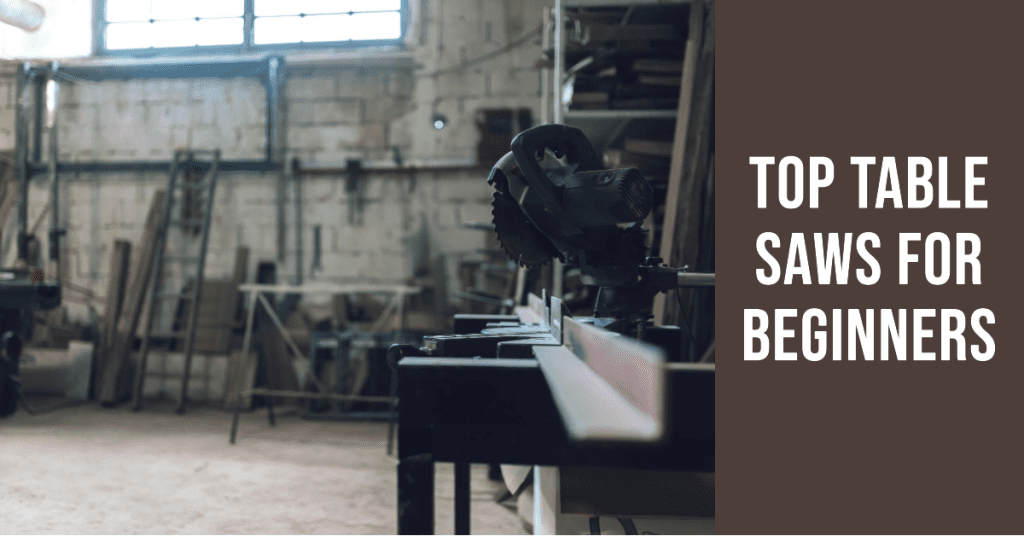Taking up woodworking as a hobby? Trying your hand at some home renovation projects? Looking to equip your workshop? Then one of the first big investments you’ll need to make is in a table saw.
Table saws are essential for all types of rip and cross-cutting on boards, sheets, and other materials. As a woodworking staple, a good table saw ensures you can take on all sorts of projects with precision and ease.
However, table saws come in a dizzying range of types, sizes, features, and prices. And when you’re just starting out, sorting through it all to find the right saw can feel overwhelming.
That’s why in this guide, we’ll cover everything a woodworking or DIY beginner needs to know to pick the best table saw in 2024. We’ll overview how these saws work, what features matter most for novices, and provide our top beginner table saw recommendations currently available.
Let’s get started!
How Table Saws Work
A table saw is composed of several key components that allow you to make cuts with accuracy and repeatability:
- Table Surface – Flat surface for feeding material towards the blade. Often made of cast iron for stability. May have ruler guides.
- Miter Gauge – Guide with an adjustable angle that holds workpieces when making cross cuts. Runs in the miter slot.
- Blade Height Handwheel – Raises and lowers the blade to the proper depth for each material. Locks in place.
- Bevel Handwheel – Adjusts angle of blade tilt for beveled cuts. Typically tilts up to 45-90 degrees.
- Motor – Powers spinning saw blade. Usually 1-5 HP. More power allows bigger blades and feed rates.
- Fence – Guided bar to position workpiece when making rip cuts. Keeps material stable and straight.
- Guard – Safety hood enclosing the blade while allowing material feed. Prevents hands touching blade.
Together, these components allow both rip cuts (lengthwise with wood grain) and cross cuts (across grain) to be made accurately with precision depth and angle control.
Now let’s look at how you should evaluate table saws as a beginner.
What to Look for as a Beginner
When buying a table saw as a novice woodworker, you mainly want five key attributes:
- Safety features
- Ease of use
- Decent power
- Good dust collection
- Accuracy and smooth operation
You likely don’t need the heaviest, most powerful industrial table saws used in professional shops. Nor do you want flimsy portable saws unable to handle real work. The sweet spot is often a sturdy benchtop or hybrid saw offering enough capability for most home woodworking tasks.
Here are the most important specifications and components to consider as a beginner selecting a starter table saw:
| Attribute | What to Look For |
| Safety Features | Blade guards, riving knives, anti-kickback pawls, and overload protection. |
| Motor Power | At least 1 to 1.5 HP. Look for 15+ amp motors. |
| Table Size | 20-30” deep x 20+” wide. More means more support for large pieces. |
| Maximum Depth of Cut | 3-4” great for smaller stock. Matches many common plywood/board sizes. |
| Built-in Dust Collection | Minimizes cleanup and health hazards from sawdust. |
| Warranty Period | At least 2 years of coverage is preferred. |
| Precision & Smooth Cuts | Clean, straight cuts without excessive tear out or burning. |
| Price Range | $300 to $800 offers good value for most hobbyists. |
Pay special attention to safety systems, precision cutting performance, and dust collection when evaluating beginner table saws. Pay for quality where it really counts – don’t cut corners just to save money. Cheaper saws often sacrifice safety.
You want a model that allows you to rip and crosscut both smaller stock like 1x pine boards as well large sheet materials like plywood for bigger projects. This capability ensures your beginner table saw will remain useful even as your skills grow.
Next let’s look at our picks for best table saws for novices this year.
Top 5 Table Saws for Beginners
Based on the ideal features highlighted above that best suit new woodworkers, here are 5 excellent table saw options to consider buying in 2024 as your first saw:
1. Metabo HPT Jobsite Table Saw
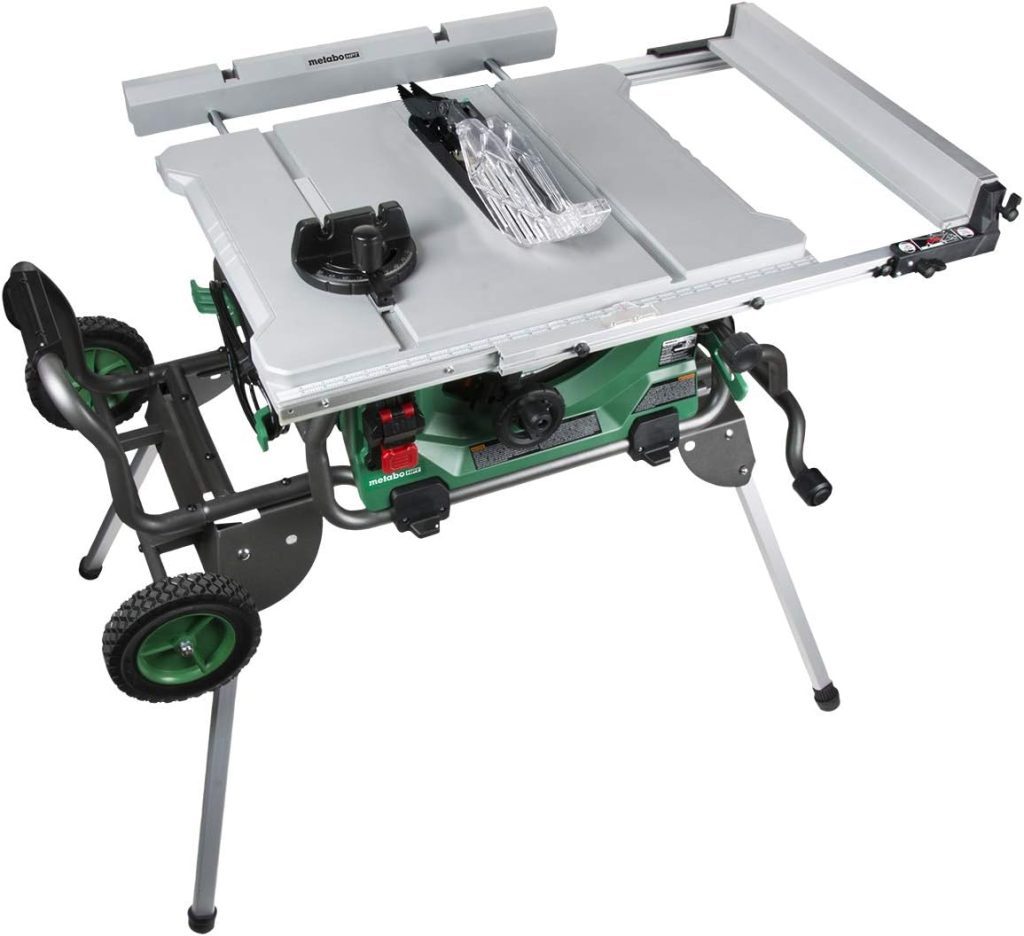
- Plenty of safety features
- Impressively smooth cutting
- Lightweight but durable construction
- Great dust collection
- Slightly louder than others when cutting
For a portable-style saw, the Metabo HPT jobsite table saw packs in plenty of power while keeping the weight under 60 pounds for mobility. Safety features include anti-kickback pawls and a riving knife to prevent binding and dangerous kickback. A 3-1/4” depth of cut handles typical stock sizes well and the rack & pinion rip fence stays square to the blade for precise cuts. Overall, it’s a great lightweight choice for hobbyists focused on workshop tasks over jobsite use.
2. DeWalt DWE7491RS
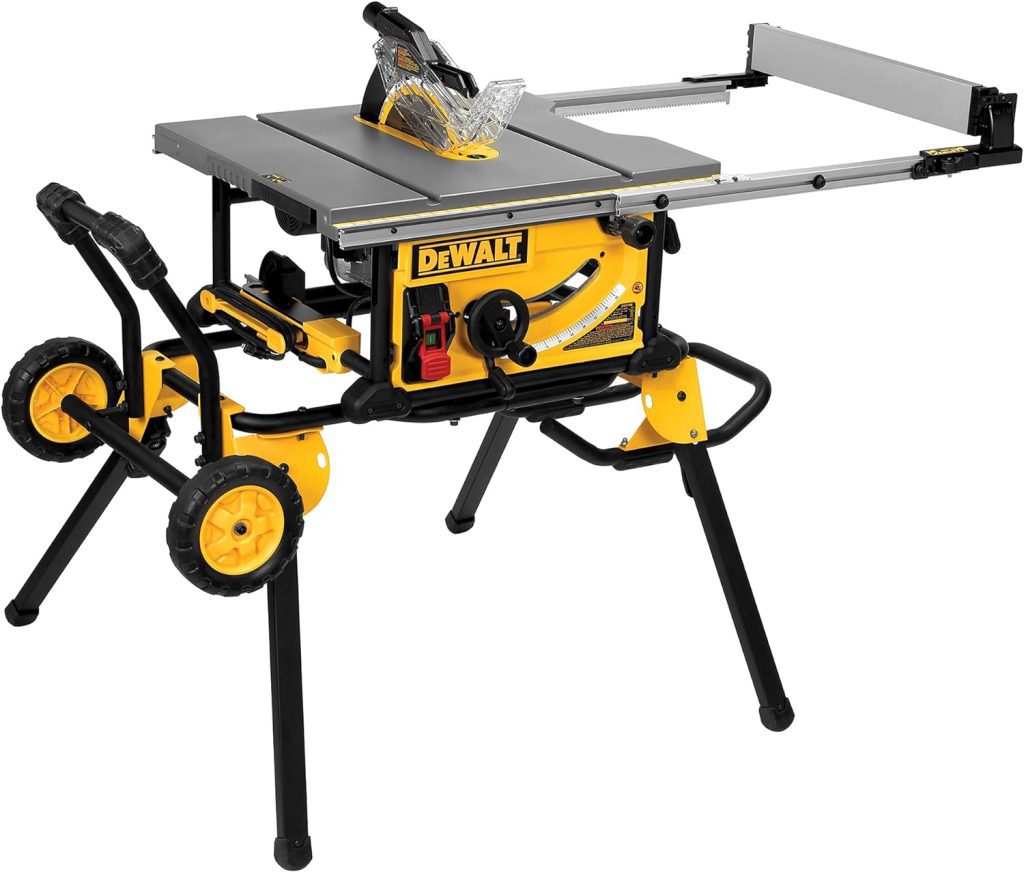
- Very sturdy and well-built
- Huge rip capacity
- Integrated storage onboard
- Fantastic dust collection
- Significant investment for first saw
DeWalt’s DWE7491RS gets rave reviews as a slightly premium table saw option for beginners focused on workshop woodworking. It’s very solidly constructed, makes exceptionally smooth cuts, and has top-notch safety features. A generous rip capacity of 32.5” suits even large stock and sheets well and integrated storage keeps accessories and tools handy. Downsides are the high price and large footprint. But it’s built to last years!
3. SKIL 3410-02
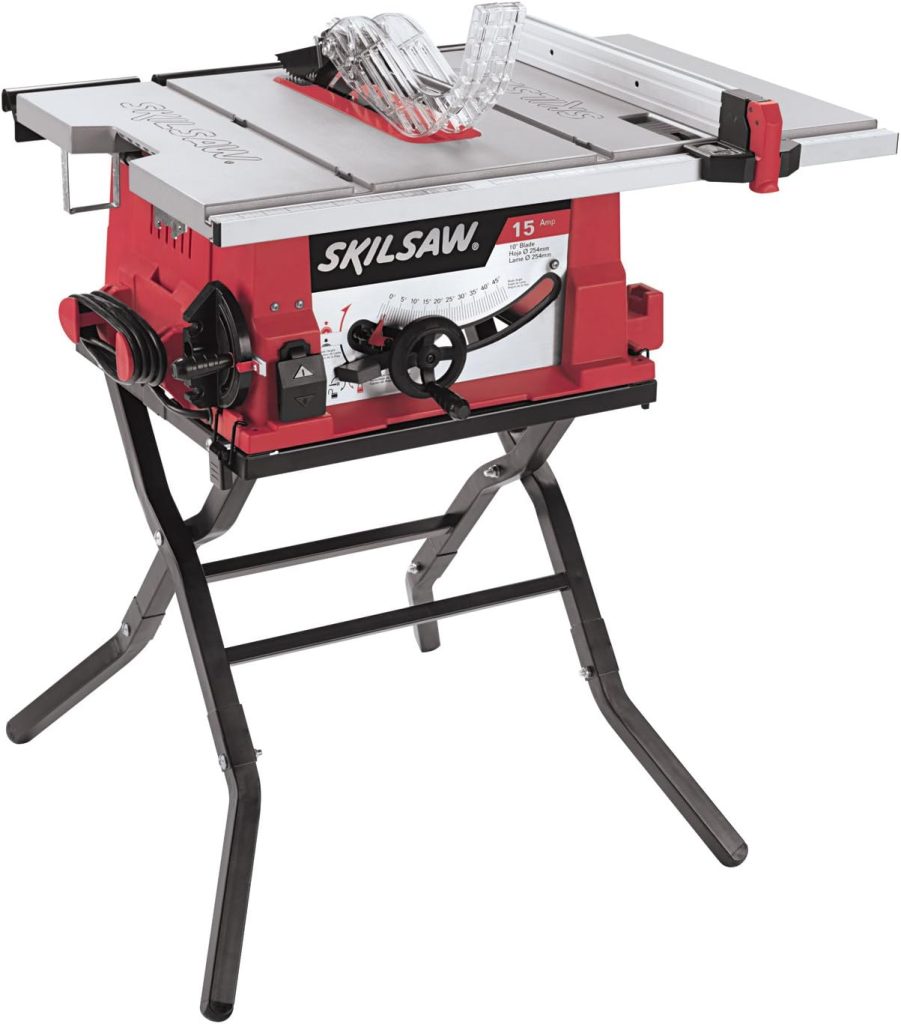
- Very inexpensive for quality
- Compact & light easy to transport
- Suitable safety features
- May struggle with thick hardwoods
- Basic miter gauge and fence
For workshop tasks and occasional job sites, the Skilsaw 3410-02 table saw gives beginners excellent value. While light for a table saw at just 67 pounds, it puts out enough power with its 15 amp motor to rip through pine, plywood, etc. without issue. Safety techs like anti-kickback pawls, blade guard, and riving knife make it suitable for novices too. Just don’t expect premium precision or capacity at this price. But works fines for most casual users!
4. Bosch 4100-10
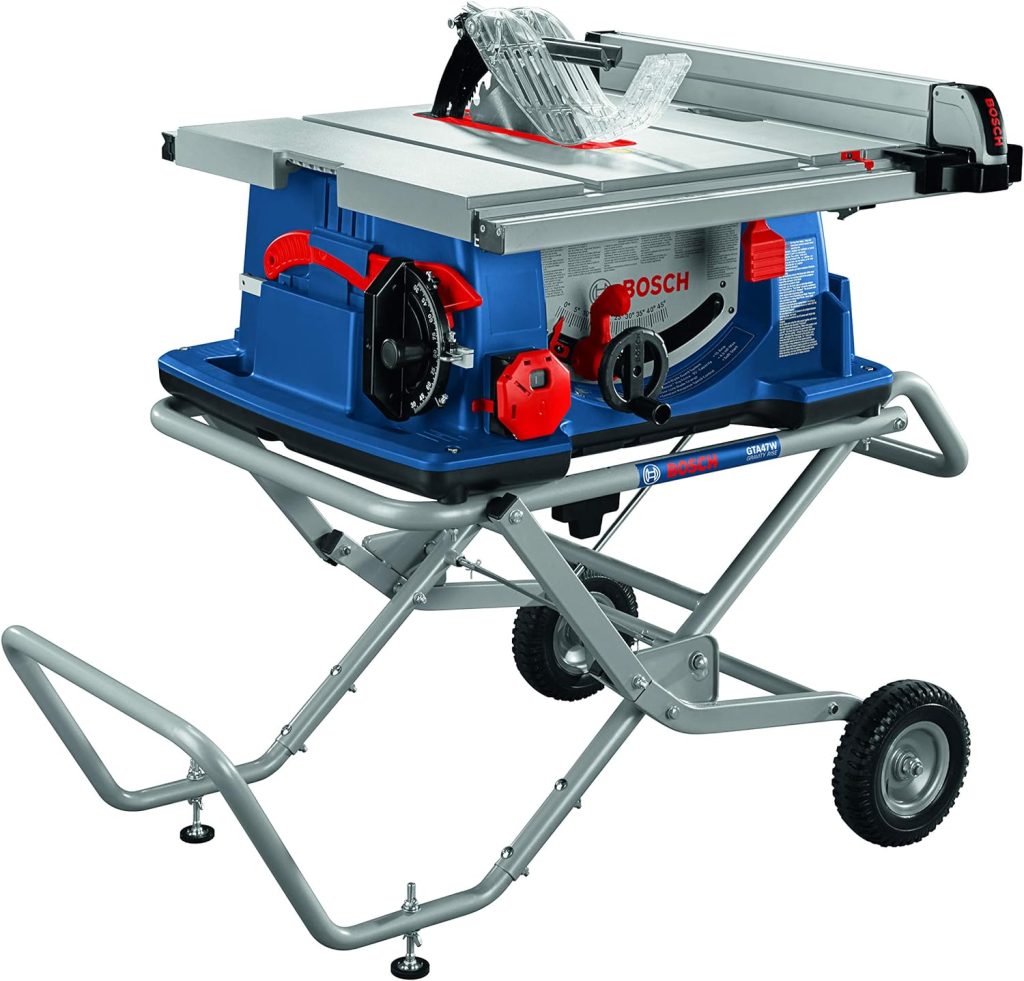
- Very portable & modular
- Excellent fit and finish
- Smooth rack & pinion fence
- Smaller table and depth of cut
- Setup/breakdown adds time
The Bosch 4100-10 earns strong praise for its innovative gravity rise collapsible wheeled stand paired with a compact but capable saw. Sturdy construction, unparalleled portability, and Bosch’s reputation for quality make this a great choice for hobbyists short on space or for small jobsite use. Just be aware the small table surface and max cut depth under 3” limit larger rips. But if mobility is key, the Bosch 4100 is hard to beat!
5. Rockwell RK7323
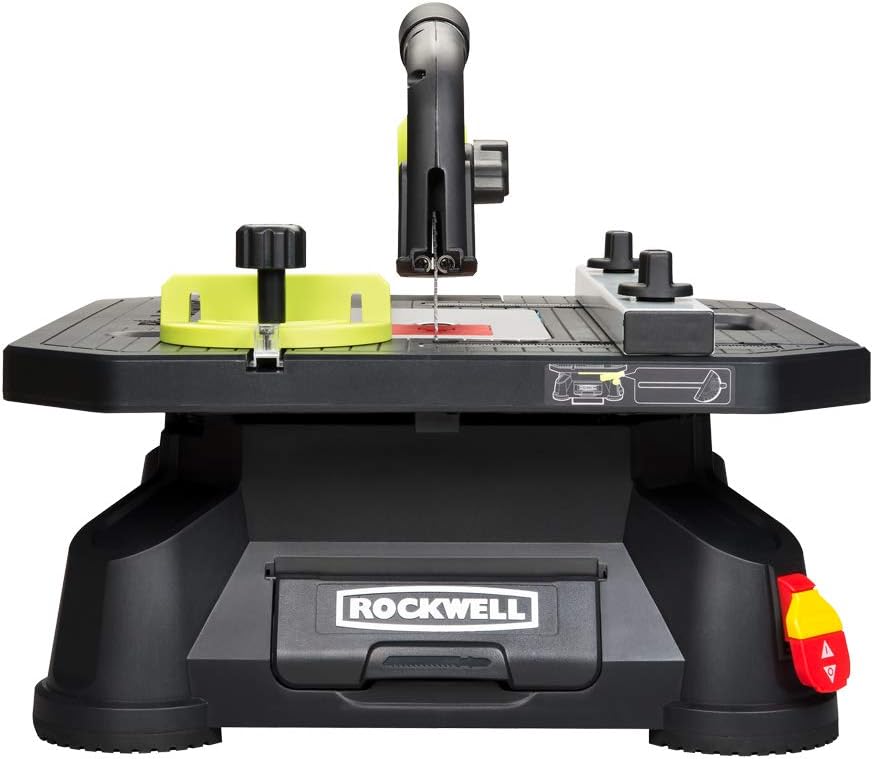
- Laser guide useful for alignment
- Includes miter gauge and fence
- Lightweight with carry handle
- Lacks riving knife
- Noisy compared to similar models
Rockwell packs lots of capability into the portable RK7323 benchtop saw. A laser cutline indicator assists with correctly lining up cuts – a nice feature for newbies. The self-aligning fence and miter gauge also make setup easier while helping maximize cutting accuracy. Overall it’s a versatile lightweight saw ready to help hobbyists tackle projects both in the workshop and on the go at job sites. Just note it skimps on a few safety features by lacking a riving knife.
Making the Final Decision
As you can see, you have several great options for capable starter table saws depending on your needs and priorities between safety, precision, portability, dust collection and more.
Here’s a quick cheat sheet for picking between the models above:
- Best for Portability: Bosch 4100-10
- Smoothest Cuts: DeWalt DWE7491RS
- Best Dust Collection: Metabo HPT C10RJ
- Top Safety Features: DeWalt DWE7491RS
- Most Affordable: SKIL 3410-02
- Best Laser Guide: Rockwell RK7323
To make your final choice:
- Determine your budget – Prices range quite a bit between basic to premium saws. Set realistic spending expectations.
- Consider where you’ll use it – Small workshops and jobsite portability require a different saw than a fixed basement shop.
- Review safety limitations – If a riving knife is non-negotiable then limit options accordingly. Prioritize safety.
- Compare sizes/depths – Ensure the saw can handle the materials you expect to cut – both in width and thickness.
- Try them in person – If possible visit showrooms and get hands-on with table saws you’re considering before deciding.
While it takes a little work to select a quality starter table saw appropriate for your needs, doing so ensures you’re equipping your shop properly from the very beginning as either a casual hobbyist or more devoted woodworking enthusiast.
And with that Congratulations – you’re on your way to making your first table saw purchase as a beginner!

